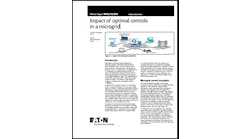Pittsburgh’s smart city project, one that includes a grid of microgrids, last week won an $11 million grant from the Department of Transportation for certain transportation features of the plan.
The Pennsylvania city plans to create spines throughout the city that interconnect smart energy, transportation and communications. A goal is to improve air quality and traffic flow.
The plan includes microgrids in and around the city that will work together and incorporate existing district energy systems. However, the DOT funding is slated solely for the transportation aspects of the plan.
The grid of microgrids is designed to serve hospitals, universities, data centers and critical infrastructure. The city hopes to create “inter-relations between these systems, reinforcing grid security, providing redundancies and creating business continuity.” This aspect of the project will begin with four microgrids in Pittsburgh Downtown, Uptown, Oakland and Northside neighborhoods. Later the city plans to add microgrids in its Hazelwood and Lower Hill District neighborhoods.
Partners in the microgrid project include the City of Pittsburgh, University of Pittsburgh, the Department of Energy, Duquesne Light, People’s Natural Gas and NRG Energy.
The grid of microgrids is a futuristic concept where microgrids act together. They communicate and automatically configure to share resources and maximize efficiencies. But if a disturbance occurs – such as power outage on the central grid – they island from the grid, and each other, to protect their systems and supply local customers with electricity. Some microgrid advocates see the U.S. grid eventually becoming largely a grid of microgrids with the central grid acting as a back-up system.
From Pittsburgh proposal, “Beyond Traffic: The Smart City Challenge”
In addition to its grid of microgrids, Pittsburgh is planning a direct current microgrid to charge a city-owned electric vehicle fleet. (The city’s mayor has set up a long-term capital plan to buy the vehicles.)
The city intends to put the charging stations in a public parking lot downtown with a solar canopy connected to a microgrid. High resolution data logging will help the city make use of the vehicle batteries as a grid resource. The city also will use the data to monitor and study use of the fleet for transportation.
Pittsburgh was one of several communities that won DOT smart city money last week. Others included San Francisco $11 million, Houston $9 million, Denver $6 million, Marysville, Ohio $6 million and Los Angeles $3 million. The Niagara Frontier Transportation Authority in New York won $8 million.
The DOT awarded the funds through two of its initiatives: the Advanced Transportation and Congestion Management Technologies Deployment (ATCMTD) program run by the Federal Highway Administration (FHWA), and the Mobility on Demand (MOD) Sandbox program overseen by the Federal Transit Administration (FTA).







